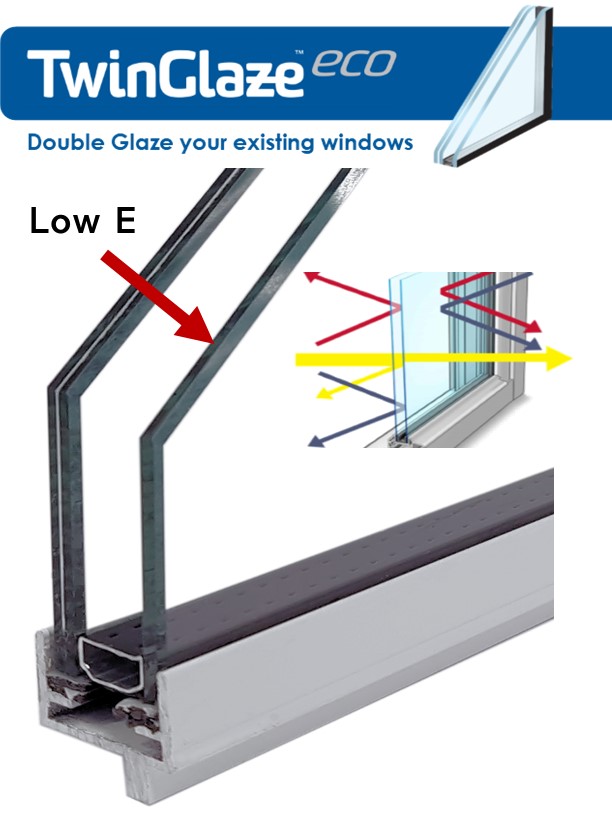All Categories
Featured
Table of Contents
Does Double Glazing Keep Heat Out in West Swan Perth
Glazing just implies the windows in your house, including both openable and fixed windows, as well as doors with glass and skylights. Glazing in fact just implies the glass part, however it is typically utilized to refer to all aspects of an assembly consisting of glass, films, frames and furnishings. Taking note of all of these aspects will help you to accomplish efficient passive style.

Energy-efficient glazing makes your house more comfy and considerably decreases your energy expenses. Nevertheless, inappropriate or badly created glazing can be a major source of undesirable heat gain in summer and significant heat loss and condensation in winter. As much as 87% of a house's heating energy can be gained and up to 40% lost through windows.
Canberra Window Replacement - Upvc Double Glazed ... in Southern River Perth
Glazing is a considerable financial investment in the quality of your home. The expense of glazing and the expense of heating and cooling your home are closely related. An initial financial investment in energy-efficient windows, skylights and doors can considerably decrease your yearly cooling and heating costs. Energy-efficient glazing likewise minimizes the peak heating and cooling load, which can decrease the needed size of an air-conditioning system by 30%, causing further expense savings.

This tool compares window selections to a base level aluminium window with 3mm clear glass. Comprehending some of the key properties of glass will assist you to choose the very best glazing for your home. Secret properties of glass Source: Adjusted from the Australian Window Association The amount of light that goes through the glazing is known as noticeable light transmittance (VLT) or noticeable transmittance (VT).
The Surprising Benefits Of Double Glazing In The Summer ... in Subiaco Perth
This may lead you to turn on lights, which will result in higher energy expenses. Conduction is how readily a material carries out heat. This is called the U value. The U worth for windows (revealed as Uw), describes the conduction of the whole window (glass and frame together). The lower the U value, the higher a window's resistance to heat flow and the much better its insulating value.
For example, if your house has 70m2 of glazing with aluminium frames and clear glass with a U worth of 6. 2W/m2 C, on a winter's night when it is 15C cooler outside compared to inside your home, the heat loss through the windows would be: 6. 2 15 70 = 6510W That is equivalent to the overall heat output of a big room gas heater or a 6.
Double Glazed Windows In Melbourne in Hilton WA

If you select a window with half the U value (3. 1W/m2 C) (for instance, double glazing with an argon-filled space and less-conductive frames), you can cut in half the heat loss: 3. 1 15 70 = 3255W The solar heat gain coefficient (SHGC) for windows (revealed as SHGCw) measures how easily heat from direct sunlight flows through a whole window (glass and frame together).
The lower a window's SHGC, the less solar heat it sends to your house interior. Glazing makers declare an SHGC for each window type and style. However, the real SHGC for windows is impacted by the angle that solar radiation strikes the glass. This is called the angle of incidence.
The Surprising Benefits Of Double Glazing In The Summer ... in Mundijong WA
When the sun is perpendicular (at 90) to the glass, it has an angle of occurrence of 0 and the window will experience the maximum possible solar heat gain. The SHGC declared by glazing makers is always calculated as having a 0 angle of occurrence. As the angle increases, more solar radiation is reflected, and less is transmitted.
Table of Contents
Latest Posts
8 Benefits Of Double Glazing To Take Advantage Of in Orelia Perth
Which Type Of Double Glazed Window Frame Is Right For You? in Ocean Reef Western Australia
Twinglaze® Double Glaze Specification Act - Vic in Inglewood WA
More
Latest Posts
8 Benefits Of Double Glazing To Take Advantage Of in Orelia Perth
Which Type Of Double Glazed Window Frame Is Right For You? in Ocean Reef Western Australia
Twinglaze® Double Glaze Specification Act - Vic in Inglewood WA